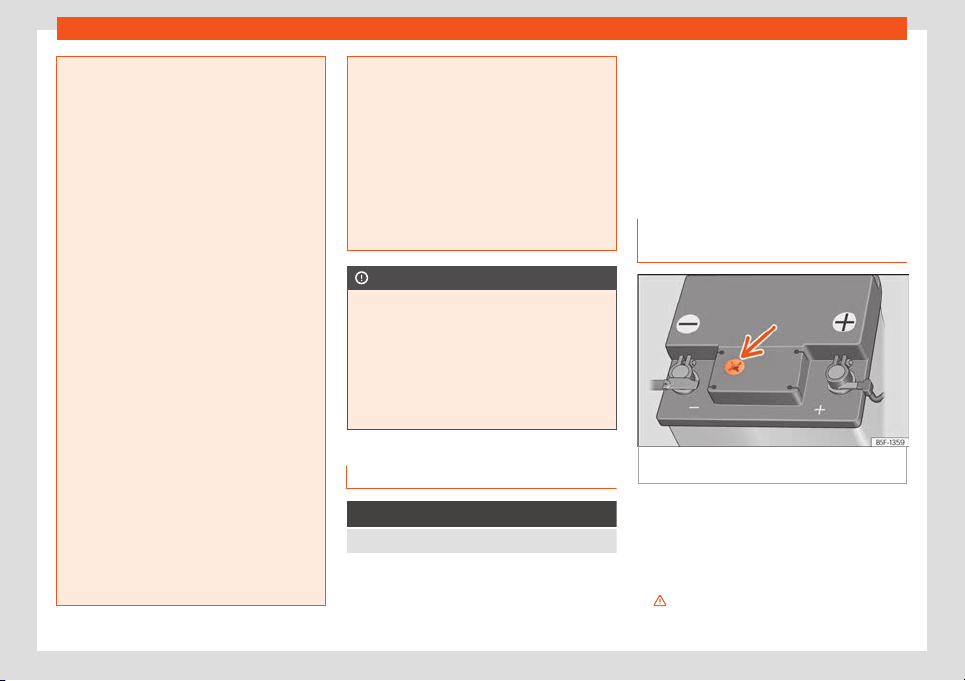Loading ...
Loading ...
Loading ...

Practical tips
●
Fires, sparks, open fl
ames and smoking
are prohibited. When handling cables and
electrical equipment, avoid causing sparks
and electrostatic charge. Never short the
battery terminals. High-energy sparks can
cause injury.
●
A highly explosive mixture of gases is re-
leased when the battery is under charge.
The batteries should be charged in a well-
ventilated room only.
●
Keep children away from acid and bat-
teries.
●
Before working on the electrical system,
you must switch off the engine, the ignition
and all electrical devices. The negative ca-
ble on the battery must be disconnected.
When a light bulb is changed, you need on-
ly switch off the light.
●
Deactivate the anti-theft alarm by un-
locking the vehicle before you disconnect
the battery! The alarm will otherwise be
triggered.
●
When disconnecting the battery from the
vehicle on-board network, disconnect first
the negative cable and then the positive
cable.
●
Switch off all electrical devices before
reconnecting the battery. Reconnect first
the positive cable and then the negative
cable. Never reverse the polarity of the
connections. This could cause an electrical
fire.
●
Nev
er charge a frozen battery, or one
which has thawed. This could result in ex-
plosions and chemical burns. Always re-
place a battery which has frozen. A flat
battery can also freeze at temperatures
close to 0°C (+32°F).
●
Ensure that the vent hose is always con-
nected to the battery.
●
Never use a defective battery. This could
cause an explosion. Replace a damaged
battery immediately.
CAUTION
●
Do not expose the batt
ery to direct sun-
light over a long period of time, as the in-
tense ultraviolet radiation can damage the
battery housing.
●
If the vehicle is left standing in cold con-
ditions for a long period, protect the bat-
tery from “freezing”. If it freezes it will be
damaged.
Warning lamp
It lights up red
Alternator fault.
The control lamp lights up when the ignition is
s
wit
ched on. It should go out when the engine
has started running.
If the control lamp lights up while driving,
the alternator is no longer charging the bat-
tery. You should immediately drive to the
nearest specialised workshop.
You should avoid using electrical equipment
that is not absolutely necessary because this
will drain the battery.
Checking the battery electrolyte
level
Fig. 192
Sight glass on the top of the 12 volt
batt
ery (schematic r
epresentation).
The electrolyte level should be checked reg-
ul
arly in high-mil
eage vehicles, in hot coun-
tries and in older batteries.
●
Open the bonnet and then lift the cover
that protects the front part of the battery
›››
in Working in the engine compart-
ment on page 264.
274
Loading ...
Loading ...
Loading ...